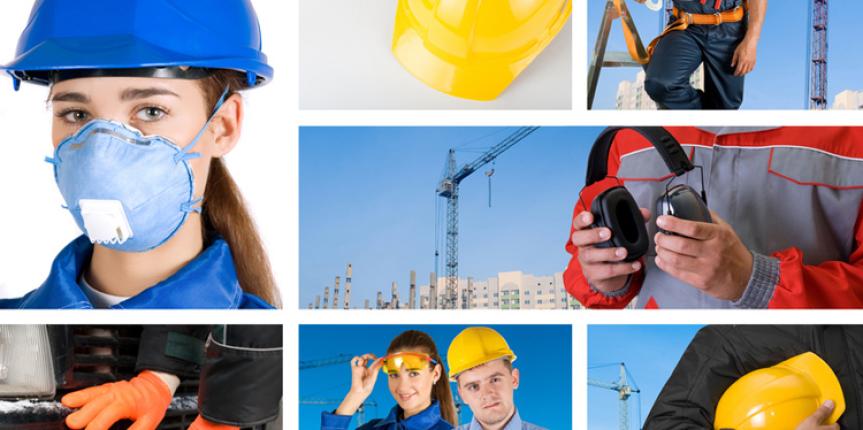
Construction project management requires skills and expertise of that of a standard project manager but applied to the development industry. As construction projects always shifts, a perfect construction project manager should have enough experience and will skill to handle and manage his teams and meet his project goals.
Construction project management typically includes complicated tasks which may shift widely, counting on things of the work and it requires some powerful skills, like, excellent ability to speak with his team members, clients, and stakeholder, ability to solve complex project, and knowledge of building process.
The construction project manager plays a vital role in construction management, and he shoulders the responsibility for keeping the project, browsing its path, and consistent with the project planning. His main goal is to manage, schedule, finish the project on time and within budget.
The requirement of Safety Tools and Equipment
Today’s tools and equipment have allowed construction workers to eliminate a lot of imperfect mechanisms in construction. Mastery over tools and equipment has increased man’s overall productivity. Tools are particularly necessary for construction work. The necessity of safety tools arises due to the following reasons :
- Magnitude and complexity of the project
- Projects involving large quantities of material handling
- The complexity of projects using high-grade materials
- Importance of keeping the time schedules
- Shortage of skilled and efficient manpower
They are primarily wont to put things together (e.g., hammers and nail guns) or to require them apart (e.g., saws and jackhammers). Tools are often distinguished as power tools and hand tools. Hand tools include all devices that are non-powered, like hammers and pliers.
Power tools are divided into classes, counting on the facility source: pneumatic tools (the ones powered by compressed air), powder-actuated tools (the ones usually powered through an explosive and operated sort of a gun), electrical tools ( the ones powered by electricity), liquid-fuel tools (the ones traditionally powered by gasoline), and hydraulic tools (the ones powered by pressure from a liquid). Each of these types presents some distinct safety problems.
Types of Heavy Equipment used in Construction Site
Various heavy equipment is used in the construction sites, some of them are:
1. Excavators
It is essential and prominently used equipment in the industry. Their general purpose is to excavate, but other than that, they are also utilized for many purposes like demolition, heavy lifting, cutting of trees, river dredging, etc.
2. Backhoe
This is another widely used equipment that is suitable for multiple purposes. The name itself suggests that the arrangement of hoe is given on the backside of the vehicle while the loading bucket is provided in the front.
3. Dragline excavator
It is another heavy equipment utilized in construction, which is usually used for more extensive depth excavations. It consists of an extended length boom, and the digging bucket is suspended from the highest of the boom using a cable.
4. Bulldozers
It is another sort of soil excavating equipment which are wont to remove the topsoil layer up to particular depth. The removal of dirt is completed by the sharp-edged wide metal plate provided at its front. This plate is often lowered and raised using hydraulic pistons.
5. Graders
It is also called motor graders are another sort of equipment utilized in construction, especially for the development of roads. It is mainly wont to level the soil surface. It contains a horizontal blade in between the front and rear wheels, and this blade is lowered into the bottom while working. The operating cabin is provided on the highest of the rear axle arrangement.
6. Tower cranes
It is a fixed crane that is used for hoisting purposes in the construction of large structures. Heavy materials like pre-stressed steel trusses, concrete blocks, frames, etc. can be easily carried to the needed height using this sort of kit.
Why Safety Tools are Important?
Every industry has its processes that make use of both machines and humans. All these processes pose some threats which require special safety measures. However, some risk factors are common in every sector. These risk factors can be deadly if proper precautions are not taken that’s why construction safety gear is very important.
Construction and mining sites are not any exceptions to hazardous tasks, be it massive or tiny. Though the industries have improved their processes with technology, even then, there’s always a risk to human life at the sites. This makes it essential for both the employers as well as the employees to follow a strict set of rules for safety precautions and wear safety tools.
List of important Personal Protective Equipment (PPE)
Here may be a list of a number of the essential personal protective equipment (PPE) for construction workers:
1. Eye and Face Safety Equipment
The eyes and face are the most sensitive parts of the body, and hence they need utmost precaution at construction sites. The majority of eye injuries take place due to gasses, foreign particles, or objects that get inside the eyes while cutting, working with concrete, welding, nailing, grinding, etc.
2. Head Protection
At construction sites, there’s always a risk of objects falling from heights, and causing severe injury to your head. The hard hat may be a vital gear that shields workers or visitors from the objects that fall or coming in direct contact with any harmful substance. These hats also are useful for protection from rain, direct sun rays, and electric shock.
3. Hand Safety Wears
Almost all work related to construction makes active use of hands. Due to this reason, proper precaution is required to avoid common injuries like puncture wounds and cuts.
4. Protective Footwear
Many of the deadly hazards at construction happen because of slipping, tripping, and falling accidents. Unsafe ladders or scaffolds may be the reason that these accidents take place. Unsafe footwear is also one of the leading causes behind these events. Hence, construction workers must wear shoes that have slip-proof and puncture-resistant soles.
